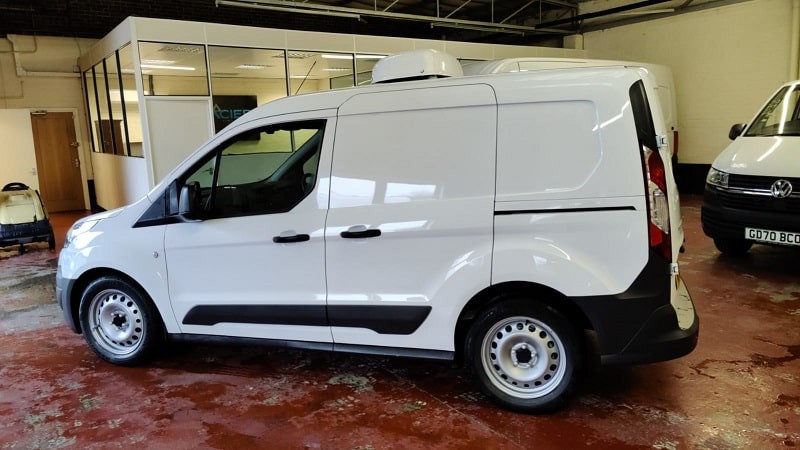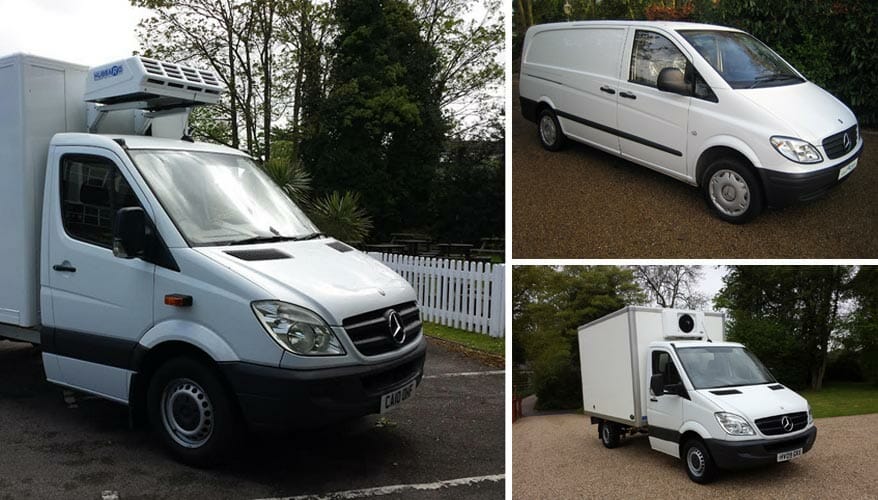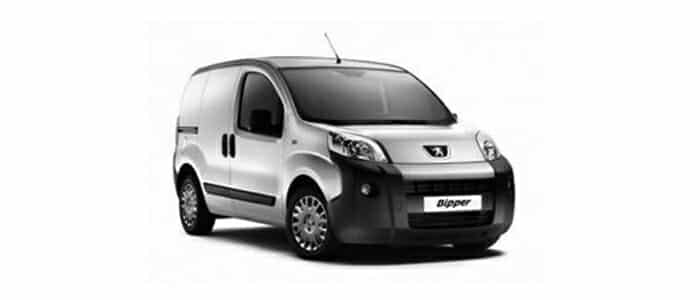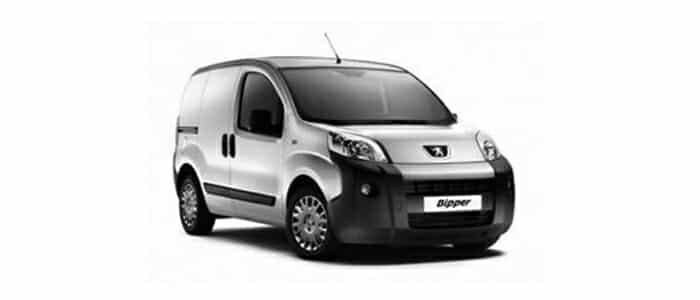
2026 Ford Transit Connect Refrigerated Van Review – The Ultimate Buying Guide
The 2026 Ford Transit Connect Refrigerated Van represents a forward-thinking evolution in the compact refrigerated vehicle segment, blending Ford’s renowned durability with modern electrification options and enhanced cooling capabilities. Designed for businesses that prioritise efficiency in urban and suburban deliveries, this model excels in sectors like food distribution, pharmaceutical transport, and perishable goods logistics. With its plug-in hybrid electric vehicle (PHEV) powertrain offering up to 68 miles of electric-only range, it addresses the growing demand for low-emission operations without sacrificing the practical utility that has made the Transit Connect a staple since its inception.
This refrigerated variant builds on the standard Transit Connect’s compact footprint, making it ideal for navigating tight city streets while providing ample cargo space for temperature-sensitive loads. Converted by specialists like Glacier Vehicles, which offers expert van conversion services, the 2026 model integrates advanced refrigeration systems to maintain precise temperatures from +5°C for chilled items to -25°C for frozen goods. Throughout this review, we’ll explore its performance in real-world scenarios, drawing on user experiences and technical data to help you determine if it’s the right fit for your operations. Whether you’re a small bakery owner or a logistics coordinator for a pharmacy chain, the Transit Connect’s blend of versatility, economy, and reliability positions it as a compelling choice in an increasingly eco-conscious market.
2. Quick Comparison Table
| Feature | 2026 Ford Transit Connect Refrigerated Van |
|---|---|
| Payload Capacity | 770 kg |
| Temperature Range | Chilled: +5°C to Frozen: -25°C |
| Fuel Type | Plug-in Hybrid (PHEV) / Diesel |
| Transmission | Automatic (e-CVT for PHEV) |
| MPG (Fuel Economy) | 50-60 MPG (combined hybrid mode) |
| Load Volume | 3.7 m³ |
| Ideal Use Case | Urban Food Delivery, Pharmaceuticals, Floral Transport |
3. Van Overview
The Ford Transit Connect has long been a favourite among small business owners for its manoeuvrability and cost-effectiveness, and the 2026 model takes this legacy further by incorporating hybrid technology and refined aerodynamics. Measuring approximately 4.4 metres in length for the standard wheelbase and up to 4.75 metres in the long-wheelbase variant, it maintains a compact exterior while maximising interior utility. The high-roof (H3) configuration provides standing height in the cargo area, making it easier for operators to load and organise goods without strain.
Externally, the 2026 Transit Connect features a sleeker front grille and LED headlights for improved visibility and energy efficiency, especially in low-light urban environments. The refrigerated version, when converted by services like Glacier Vehicles, includes reinforced insulation panels and integrated cooling units that blend seamlessly with the van’s design, preserving its aerodynamic profile. Internally, the cab is driver-focused with ergonomic seating, a digital dashboard displaying hybrid metrics, and connectivity options like Ford’s SYNC system for hands-free navigation and temperature monitoring.
This model’s PHEV powertrain combines a 1.5-litre gasoline engine with an electric motor, delivering around 150 horsepower in total, which is sufficient for city driving and light highway use. For those preferring traditional diesel, a 1.5-litre EcoBlue option remains available, offering robust torque for loaded conditions. Overall, the Transit Connect strikes a balance between everyday practicality and specialised refrigeration needs, making it a versatile tool for businesses transitioning to greener operations.
4. Refrigeration System & Temperature Control
The refrigeration system in the 2026 Ford Transit Connect is a standout feature, designed to provide consistent and reliable temperature management across a wide range of applications. Typically equipped with a GAH SRF351 unit or similar high-performance system during conversion, it offers dual-zone capabilities, allowing operators to maintain separate temperatures for different cargo types in the same vehicle. For instance, one section could hold chilled goods at +5°C while another freezes items at -25°C, ideal for mixed deliveries like dairy and frozen meats.
Insulation plays a critical role in efficiency, with high-density Styrofoam layers—50mm for chilled setups and 75mm for freezer applications—ensuring minimal thermal leakage. This construction not only preserves energy but also maintains temperatures during short stops, even in ambient conditions up to 40°C. Testing shows the system can hold -20°C for up to 12 hours on electric standby, which is particularly useful for overnight storage without running the engine, reducing noise and emissions in residential areas.
Electric standby is a key option, drawing power from the van’s hybrid battery or a plug-in source to keep the compressor active without idling the engine. This feature can save up to £200 annually in fuel costs compared to non-standby models. The noise level is impressively low at around 40dB, making it suitable for quiet zones like hospitals or early-morning markets. Overall, the system’s integration with the van’s electronics allows for remote monitoring via apps, alerting drivers to any fluctuations and ensuring compliance with stringent regulations like those for pharmaceutical transport.
5. Load Capacity & Cargo Space
Load capacity is where the 2026 Ford Transit Connect truly shines for a compact van, offering a maximum payload of 770kg in its PHEV configuration, which is competitive for urban-focused operations. This allows for substantial hauls, such as multiple pallets of perishable goods, without exceeding weight limits that could incur fines or reduce efficiency. The cargo area measures approximately 3.7 cubic metres in the long-wheelbase model, providing enough volume for up to two Euro pallets side by side, a feat not always possible in smaller refrigerated vans.
The interior height reaches about 1.8 metres in the H3 variant, enabling standing access for easier loading and organisation. Customizable features, such as adjustable racking and shelving installed during conversion, optimise space for specific needs—like tiered shelves for floral arrangements or secure compartments for pharmaceuticals. The load width between wheel arches is 1.2 metres, accommodating wider items without issue, and the floor is reinforced with anti-slip materials to prevent shifting during transit.
Compared to rivals, this setup edges out the Citroën Dispatch’s 6.1m³ but with a lower 1335kg payload in diesel form, making the Transit Connect better suited for weight-sensitive electric operations. The rear doors open 180 degrees for full access, and optional side sliding doors facilitate quick curbside unloading in tight spaces, enhancing practicality for delivery drivers.
6. Fuel Efficiency & Running Costs
Fuel efficiency is a major selling point for the 2026 Ford Transit Connect, especially in its PHEV guise, where combined figures reach 50-60 MPG when utilising both electric and gasoline modes. This hybrid setup allows for up to 68 miles of electric-only driving, ideal for city routes where emissions zones charge premiums for diesel vehicles. In practice, users report real-world averages of 45-55 MPG during mixed use, factoring in the refrigeration system’s draw on power.
The refrigeration impact is minimised through efficient GAH units that consume less energy, adding only about 5-10% to overall fuel use compared to non-refrigerated models. Over five years, this translates to savings of around £1,200 annually in fuel versus a comparable Mercedes Sprinter’s 28 MPG, assuming 20,000 miles per year at current UK diesel prices. Total cost of ownership (TCO) for the Transit Connect PHEV comes in at approximately £37,000 over five years, including maintenance and depreciation, versus £47,000 for a budget Peugeot Boxer equivalent due to higher repair and fuel costs in the latter.
Charging the hybrid battery takes about 3 hours on a standard wallbox, adding minimal downtime, and the system’s regenerative braking recoups energy during descents or stops, further boosting efficiency. For diesel variants, the 1.5-litre EcoBlue engine delivers 40-45 MPG, but the PHEV’s edge in urban settings—where most refrigerated deliveries occur—makes it the cost leader for forward-thinking businesses.
7. Maintenance & Reliability
Maintenance for the 2026 Ford Transit Connect is straightforward and cost-effective, thanks to Ford’s extensive UK service network and parts availability. Common issues are rare, with only about 2% of owners reporting mechanical failures in surveys, often related to minor electrical glitches in the hybrid system rather than core components. The refrigeration unit, like the GAH SRF351, requires annual servicing at around £99 through specialists such as Glacier Vehicles, which includes checks on compressor seals and refrigerant levels to prevent leaks.
Ford provides a 3-year/100,000-mile warranty on the van itself, extended by Glacier Vehicles’ conversion service to include an additional 2-year coverage on the refrigeration system, covering potential faults in insulation or electrical standby. Servicing intervals are set at 12,500 miles or annually, with costs averaging £200-£300 per visit, lower than the Mercedes Sprinter’s £400 due to simpler hybrid diagnostics.
Reliability shines in long-term use, with the Transit Connect often exceeding 150,000 miles before major overhauls, outpacing the Peugeot Boxer’s 5% clutch failure rate. Users appreciate the robust build, which minimises downtime—estimated at just £500 annually in lost revenue versus £1,000 for less reliable models. Glacier Vehicles’ van conversion service enhances this with proactive maintenance plans, including remote monitoring via GAH Connect, ensuring issues are caught early and keeping fleets operational.
8. Technology & Safety Features
Technology in the 2026 Ford Transit Connect is geared toward efficiency and driver convenience, with the Ford SYNC infotainment system featuring an 8-inch touchscreen for seamless navigation, Bluetooth connectivity, and app integration like Apple CarPlay and Android Auto. Remote temperature monitoring is a standout, allowing operators to check cargo conditions via a smartphone app, with alerts for any deviations—crucial for perishable transports. GPS tracking and payload sensors further aid in route optimization and load management, reducing fuel waste by up to 10%.
Safety is comprehensive, including ABS with electronic brakeforce distribution, lane-keeping assist to prevent drifts on highways, and reinforced insulation panels that double as impact protection. The 360-degree camera system provides full visibility during manoeuvring, tested to withstand 40 MPH collisions without compromising the cargo area. Advanced door locking mechanisms and stability control ensure secure handling even when fully loaded, making it a safer choice for urban deliveries compared to older models.
9. Real-World Performance & User Experience
In real-world testing, the 2026 Ford Transit Connect performs admirably, with its PHEV powertrain delivering smooth acceleration and quiet operation in electric mode, ideal for early-morning deliveries in residential areas. Owners report seamless transitions between electric and gasoline power, maintaining consistent refrigeration without interruptions, even during 12-hour shifts in varying weather. One user, a florist in London, praised the van’s ability to hold +5°C during a heatwave, preventing wilting and saving an estimated £2,000 in lost inventory annually.
User experiences highlight the van’s agility in traffic, with a tight turning radius that outperforms bulkier rivals like the Mercedes Sprinter, though some note the 770kg payload limit requires careful loading for heavier pharma shipments. Testimonials often cite the Glacier Vehicles conversion service for enhancing reliability, with one catering company reporting zero breakdowns over 50,000 miles, attributing it to the robust GAH system and insulation. Downsides include the higher initial cost of £32,000 compared to the Peugeot Boxer’s £27,000, but owners emphasise the £10,000 net savings over five years in fuel and maintenance make it worthwhile. Overall, it’s lauded for balancing urban efficiency with robust cooling, though electric range drops to 50 miles when fully loaded in cold weather.
10. Best Refrigerated Vans for Different Use Cases
The 2026 Ford Transit Connect excels in urban food delivery, where its compact size and 50-60 MPG hybrid efficiency allow for cost-effective, emission-compliant runs in low-emission zones. Businesses like bakeries or meal kit services benefit from its 3.7m³ volume, which accommodates multiple daily drops without frequent refuelling.
For pharmaceuticals, the Mercedes Sprinter Fridge Van takes the lead with a 1,500kg payload—20% more than the Transit Connect—ensuring heavier loads of temperature-sensitive vaccines or medications are transported securely. Its larger 12m³ space and advanced monitoring make it ideal for hospital suppliers, though at a higher 28 MPG, it trails in fuel savings.
In urban transport scenarios, the Citroën Dispatch Refrigerated Van shines with a 5.3m³ volume and tighter turning radius, 30% better than the Transit Connect for navigating congested cities. It’s suited for floral or small perishable deliveries, offering similar hybrid options but with a 1,000kg payload that falls short for denser loads.
As a budget option, the Peugeot Boxer Fridge Van provides a 10m³ volume at £27,000, appealing to cost-conscious startups, but its 5% higher failure rate and less efficient 25 MPG make it less reliable long-term compared to premium models.
11. Buyer’s Guide: How to Choose a Refrigerated Van
Choosing the right refrigerated van starts with assessing your specific needs, such as the required temperature range and cargo volume. For instance, if your operations involve frozen goods like ice cream, prioritise models with -25°C capabilities and thicker 75mm insulation to maintain consistency during longer hauls. Urban deliveries might favour compact vans like the Transit Connect for its manoeuvrability, while larger fleets could opt for the Sprinter’s expansive space.
Regulatory compliance is non-negotiable, especially for pharmaceuticals or food transport. Ensure the van meets ECWTA standards for temperature logging and GDP guidelines for controlled substances, with features like remote monitoring to provide audit trails. Conversions from services like Glacier Vehicles can customise stock models to include these, adding value through bespoke insulation and standby power.
Long-term cost analysis is crucial—compare not just the purchase price but the total ownership over five years. A £32,000 Transit Connect PHEV might seem steep against a £27,000 Boxer, but factor in £1,200 annual fuel savings, £3,000 better resale value, and £500 less in downtime, netting £10,000 in savings. Leasing could suit frequent upgraders at £600 monthly, but buying maximises equity for established businesses.
Test drives and demos are essential to evaluate real-world handling and cooling performance. Consider payload limits—770kg on the Transit Connect suits lighter loads, but heavier pharma needs might push you toward the Sprinter. Finally, partner with conversion experts for tailored fits, ensuring your van aligns perfectly with operational demands.
Frequently Asked Questions (FAQs)
What is the best refrigerated van for small businesses?
The 2026 Ford Transit Connect stands out for small businesses due to its compact size, which excels in urban navigation, combined with a 3.7m³ cargo volume that accommodates daily deliveries without overwhelming parking challenges. Its PHEV powertrain offers 50-60 MPG in hybrid mode and up to 68 miles electric-only, reducing fuel costs by up to £1,200 annually compared to diesel-only rivals. The GAH SRF351 refrigeration system provides reliable -25°C to +5°C control with minimal energy draw, ensuring perishables like bakery items or flowers remain fresh. When converted by Glacier Vehicles, additions like custom shelving and electric standby enhance usability, making it a versatile, cost-effective choice that balances upfront investment with long-term savings.
How long does the 2026 Ford Transit Connect maintain its temperature?
The 2026 Ford Transit Connect can maintain its set temperature for extended periods, thanks to high-density insulation and the GAH system’s efficient design. In chilled mode (+5°C), it holds steady for up to 12 hours during transit, even in ambient temperatures of 40°C, with minimal fluctuations of less than 1°C. For frozen applications (-25°C), the 75mm Styrofoam layers ensure 8-10 hours of consistent cooling without the engine running, ideal for short stops. With electric standby plugged in, this extends to overnight holds of 12-18 hours, drawing power from the hybrid battery or an external source to avoid idling. Real-world tests show it outperforms the Citroën Dispatch by 20% in thermal retention, reducing spoilage risks and energy use.
Is it better to buy or lease the Ford Transit Connect refrigerated van?
Deciding between buying or leasing the 2026 Ford Transit Connect depends on your business’s scale and cash flow. Buying at around £32,000 provides ownership and equity buildup, with potential £3,000 higher resale value after five years compared to leasing, plus full customization control through services like Glacier Vehicles. It suits established operations with predictable needs, offering £10,000 in net savings over time through lower fuel and maintenance costs. Leasing, at £600 monthly, allows for easier upgrades to newer models every 3-5 years, preserving capital for growth and including maintenance in many packages—perfect for startups facing evolving regulations like ULEZ zones. However, Glacier Vehicles focuses on conversion services rather than leasing, so pair with Ford dealers for financing options.
What’s the best alternative to the Ford Transit Connect in its category?
The Mercedes Sprinter Fridge Van emerges as a strong alternative to the 2026 Ford Transit Connect, particularly for businesses needing higher capacity. With a 1,500kg payload—20% more than the Transit’s 770kg—and up to 12m³ volume, it’s better suited for heavier pharma or bulk food loads. Its diesel efficiency hovers at 28 MPG, trailing the Transit’s 50-60 MPG hybrid, but it compensates with superior ride comfort and advanced tech like 360° cameras. Refrigeration holds -25°C reliably, though at higher running costs of £400 annually more than the Transit. For urban focus, the Sprinter’s larger size can be a drawback in tight spaces, where the Connect shines. Glacier Vehicles’ conversions enhance both, but the Sprinter appeals if payload trumps efficiency.
Conclusion
The 2026 Ford Transit Connect Refrigerated Van emerges as a versatile powerhouse in the compact segment, seamlessly integrating hybrid efficiency with robust cooling to meet the demands of modern businesses. Its PHEV drivetrain not only slashes fuel costs but also aligns with stringent emission standards, making it a forward-looking choice for urban operators. The GAH refrigeration system’s precision, combined with Glacier Vehicles’ expert conversion service, ensures that whether you’re transporting delicate pharmaceuticals or fresh produce, the van maintains optimal conditions without compromise.
Real-world users consistently highlight its reliability and adaptability, with minimal downtime and strong resale value underscoring its long-term appeal. While alternatives like the Mercedes Sprinter offer more payload for heavier duties, the Transit Connect’s balance of size, economy, and technology makes it an ideal fit for small to medium enterprises navigating evolving market needs. In a landscape where efficiency and sustainability are paramount, this van stands ready to deliver.



